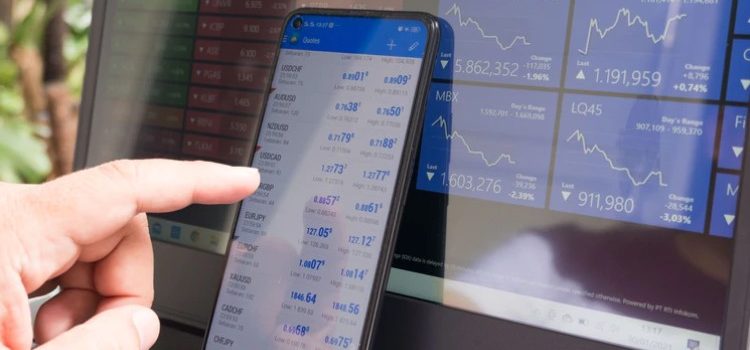

This article is an excerpt from the Shortform book guide to "The Most Important Thing" by The Princeton Language Institute and Abby Marks Beale. Shortform has the world's best summaries and analyses of books you should be reading.
Like this article? Sign up for a free trial here.
What’s a value investing strategy? How do you find underpriced securities?
According to The Most Important Thing by Howard Marks, value investing is the cornerstone of successful investing. This involves the practice of purchasing securities below their intrinsic value.
Here’s why you should choose value investing over growth investing, and how to look for underpriced securities.
Value Investing vs. Growth Investing
As Marks relates, a value investing strategy and a growth investing strategy represent different investing approaches based on securities’ fundamentals—that is, information that reflects the financial health of a security, such as revenue, cash flow, and profit margins. He argues that value investing is superior to growth investing because it yields more consistent and dependable returns.
To understand growth and value investing, however, we first need to understand the notion of intrinsic value. At its core, intrinsic value refers to the fair value of a security, assuming all relevant information was factored into its price. For example, if extreme pessimism led investors to excessively sell Amazon stock at the beginning of 2023, then Amazon’s share price of $85.46 might have been lower than its intrinsic value per share.
Marks notes that value and growth investors agree that over the long term, securities’ prices roughly match their intrinsic value. However, this agreement yields different conclusions. On one hand, value investors seek out underpriced securities—those whose price is below their intrinsic value—reasoning that, as the market corrects this disparity, these securities will increase in price. On the other hand, growth investors seek securities whose intrinsic value has high growth potential—even if these securities aren’t currently underpriced—reasoning that, as their intrinsic value increases over time, so too will their trading price.
But Marks contends that it’s much more difficult to assess long-term potential than present value. Moreover, he writes that unless you’re superior to the market at identifying potential, it’s likely that this potential is already factored into the security’s price. For example, Tesla’s stock price at the beginning of 2020—$28.30 per share—likely reflected not only Tesla’s business fundamentals, but also its potential for explosive growth. In turn, he concludes that value investing generates more consistent—and less speculative—returns than growth investing, making it preferable for investors.
How to Find Underpriced Securities
Having shown it’s possible for the market to underprice securities, Marks then offers concrete advice for finding underpriced securities. He argues that to find underpriced securities, look for those that investors have significantly misjudged. Marks reasons that if investors have accurately assessed a security, then it’s likely trading around its intrinsic value. But, if investors have inaccurately assessed a security (in this case, by underestimating it), the security’s market price will be lower than its intrinsic value.
(Shortform note: Some may say that Marks’s advice in this case borders on tautological: By definition, investors’ assessments of securities determine their market price, so it logically follows that securities are mispriced whenever investors misjudge them.)
To put this argument into practice, Marks offers several signs to look for that might indicate an underpriced security:
- Its price has rapidly decreased, leading average investors to stay away from it.
- It has some clear shortcoming that makes it less attractive to investors.
- It’s widely regarded as a poor investment, meaning that it’s not drawing much capital.
If any of these conditions are satisfied, it’s possible that other investors (and thus the market) will undervalue the security, leaving you poised to take advantage of their mistake.
| How to Distinguish Underpriced Securities From Unpromising Securities While rapid price decreases, clear shortcomings, and negative perceptions can be indications of underpriced securities, they can also be indications of unpromising securities that you should avoid. To that, experts offer various metrics to consult when attempting to distinguish between stocks that are undervalued and those that are simply poor investments. First, they recommend seeking companies whose price-to-earnings (P/E) ratio is lower than that of competitors. P/E ratios are the ratio of a company’s share price to its earnings per share (a company’s net profit divided by its number of shares), and these ratios offer a simple way to see how much investors are willing to pay for each dollar a company earns. Experts argue that comparatively low P/E ratios are indicative of underpriced stocks because low P/E ratios suggest investors are paying less relative to the company’s income than they pay elsewhere. In addition, experts recommend seeking companies with high estimated revenue growth (projections for companies’ future gross income) relative to their peers. Even if such companies are currently floundering, high estimated revenue growth suggests they could have outsized potential and could currently be underpriced. No individual metric is a foolproof indicator of underpriced securities, so these metrics can only be part of a holistic search for underpriced securities. Still, they provide a useful supplement to the signs listed by Marks. |

———End of Preview———
Like what you just read? Read the rest of the world's best book summary and analysis of The Princeton Language Institute and Abby Marks Beale's "The Most Important Thing" at Shortform.
Here's what you'll find in our full The Most Important Thing summary:
- Why the best approach to investing is value investing
- The common mistakes that expose investors to risks
- How market cycles work and how to use them to find mispriced securities






